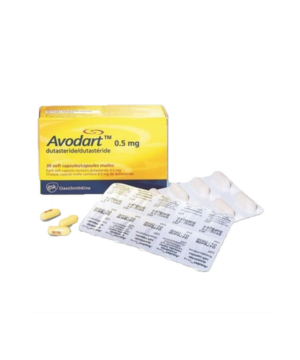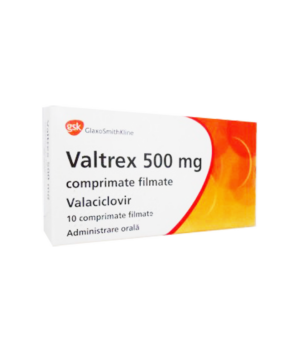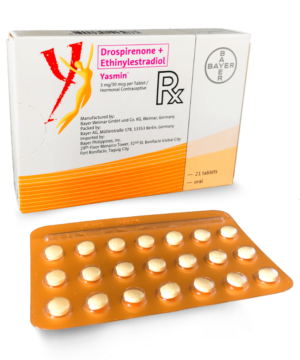Avodart 500Mcg Capsule
₱58.00
This product requires a prescription.
Avodart 500Mcg Capsule
Generic Name:?DUTASTERIDE
Avodart contains a clear, colorless to slightly yellow liquid.
* SOLD PER CAPSULE
- Applicable for Metro Cebu order
- Credit Card, GCash, Maya, Bank Transfer and COD payment available
- Daily Operations - 8:00 AM to 6:00 PM
- Order Cut-off - 3:00 PM
- Free Shipping for 1,499 and above orders (Visayas & Mindanao)
- For Order below 1,499 delivery fee of 99.00 (less than 1 kilo) will be applied
- For Order below 1,499 delivery fee of 199.00 (1 -3 kilo) will be applied
- Credit Card, GCash, Maya and Bank Transfer payment available
- Description
- Reviews (0)
Description
Avodart 500Mcg Capsule
Description :
Avodart contains a clear, colorless to slightly yellow liquid.
Indications / Uses :
Treatment and prevention of progression of BPH through alleviating symptoms, reducing prostate size (volume), improving urinary flow rate and reducing the risk of AUR and the need for BPH-related surgery.
In combination with the a-blocker tamsulosin for the treatment and prevention of progression of BPH by reducing prostate size, alleviating symptoms, improving urinary flow and reducing the risk of AUR and the need for BPH-related surgery (see Pharmacology: Clinical Studies under Actions).
Administration :
May be taken with or without food: Swallow whole, do not chew/open cap.
Contraindications :
Hypersensitivity to dutasteride, other 5a-reductase inhibitors or to any components of Avodart.
Avodart is contraindicated for use in women and children (see Precautions).
Special Precautions :
Avodart is absorbed through the skin, therefore, women and children must avoid contact with leaking capsules (see Use in pregnancy as follows). If contact is made with leaking capsules, the contact area should be washed immediately with soap and water.
The effect of hepatic impairment on dutasteride pharmacokinetics has not been studied. Because dutasteride is extensively metabolized and has a t? of 3-5 weeks, caution should be used in the administration of dutasteride to patients with liver disease (see Pharmacology: Pharmacokinetics under Actions and Dosage & Administration).
Combination Therapy with Tamsulosin and Cardiac Failure: In two 4-year clinical studies, the incidence of cardiac failure (a composite term of reported events, primarily cardiac failure and congestive cardiac failure) was higher among subjects taking the combination of Avodart and an a-blocker, primarily tamsulosin, than it was among subjects not taking the combination. In these 2 trials, the incidence of cardiac failure was low (=1%) and variable between the studies. No imbalance was observed in the incidence of cardiovascular adverse events overall in either trial. No causal relationship between Avodart (alone or in combination with an a-blocker) and cardiac failure has been established (see Pharmacology: Clinical Studies under Actions).
Effects on PSA and Prostate Cancer Detection: Digital rectal examination, as well as other evaluations for prostate cancer, should be performed on patients prior to initiating therapy with dutasteride and periodically, thereafter.
Serum PSA concentration is an important component of the screening process to detect prostate cancer.
Avodart causes a decrease in mean serum PSA levels by approximately 50% after 6 months of treatment. Patients receiving Avodart should have a new PSA baseline established after 6 months of treatment with Avodart. It is recommended to monitor PSA values regularly, thereafter. Any confirmed increase from lowest PSA levels while on Avodart may signal the presence of prostate cancer (particularly high-grade cancer) or noncompliance to therapy with Avodart and should be carefully evaluated, even if those values are still within the normal range for men not taking 5a-reductase inhibitor (see Pharmacology: Clinical Studies under Actions). In the interpretation of a PSA value for patient taking Avodart, previous PSA values should be sought for comparison.
Treatment with Avodart does not interfere with the use of PSA as a tool to assist in the diagnosis of prostate cancer after a new baseline has been established (see Pharmacology: Clinical Studies under Actions).
Total serum PSA levels return to baseline within 6 months of discontinuing treatment.
The ratio of free to total PSA remains constant even under the influence of Avodart. If clinicians elect to use percent-free PSA as an aid in the detection of prostate cancer in men undergoing dutasteride therapy, no adjustment to its value is necessary.
Prostate Cancer and High-Grade Tumors: In a 4-year study of over 8000 men aged 50-75 years, with a prior negative biopsy for prostate cancer and baseline PSA between 2.5 ng/mL and 10 ng/mL (the REDUCE study), 1517 men were diagnosed with prostate cancer. There was a higher incidence of Gleason 8-10 prostate cancers in the Avodart group (n=29, 0.9%) compared to the placebo group (n=19, 0.6%). There was no increased incidence in Gleason 5-6 or 7-10 prostate cancers. No causal relationship between Avodart and high-grade prostate cancer has been established. The clinical significance of the numerical imbalance is unknown. Men taking Avodart should be regularly evaluated for prostate cancer risk including PSA testing (see Pharmacology: Clinical Studies under Actions).
Breast Cancer in Men: Breast cancer has been reported in men taking dutasteride in clinical trials (see Pharmacology: Clinical Studies under Actions) and during the post-marketing period. Physician should instruct their patients to promptly report any changes in their breast tissue eg, lumps or nipple discharge. It is not clear if there is a causal relationship between the occurrence of male breast cancer and long term use of dutasteride.
Effects on the Ability to Drive or Operate Machinery: Based on the pharmacokinetic and pharmacodynamic properties of dutasteride, treatment with dutasteride would not be expected to interfere with the ability to drive or operate machinery.
Impairment of Fertility: The effects of dutasteride 0.5 mg/day on semen characteristics were evaluated in normal volunteers aged 18-52 years (n=27 dutasteride, n=23 placebo) throughout 52 weeks of treatment and 24 weeks of post-treatment follow-up. At 52 weeks, the mean percent reduction from baseline in total sperm count, semen volume and sperm motility were 23%, 26% and 18%, respectively, in the dutasteride group when adjusted for changes from baseline in the placebo group. Sperm concentration and morphology were unaffected. After 24 weeks of follow-up, the mean percent change in total sperm count in the dutasteride group remained 23% lower than baseline. While mean values for all semen parameters at all time points remained within the normal ranges and did not meet predefined criteria for a clinically significant change (30%), 2 subjects in the dutasteride group had decreases in sperm count of >90% from baseline at 52 weeks, with partial recovery at the 24-week follow-up. The clinical significance of dutasteride’s effect on semen characteristics for an individual patient’s fertility is not known.
Use in pregnancy: Dutasteride is contraindicated for use by women. Dutasteride has not been studied in women because preclinical data suggests that the suppression of circulating levels of dihydrotestosterone may inhibit the development of the external genital organs in a male fetus carried by a woman exposed to dutasteride.
Use in lactation: It is not known whether dutasteride is excreted in breast milk.
Be the first to review “Avodart 500Mcg Capsule”
You must be logged in to post a review.



















Reviews
There are no reviews yet.